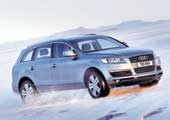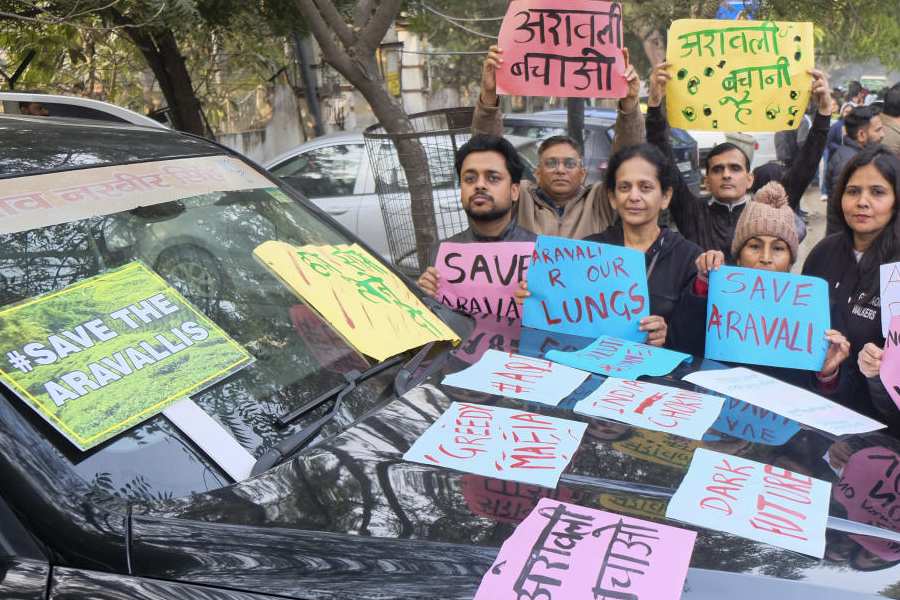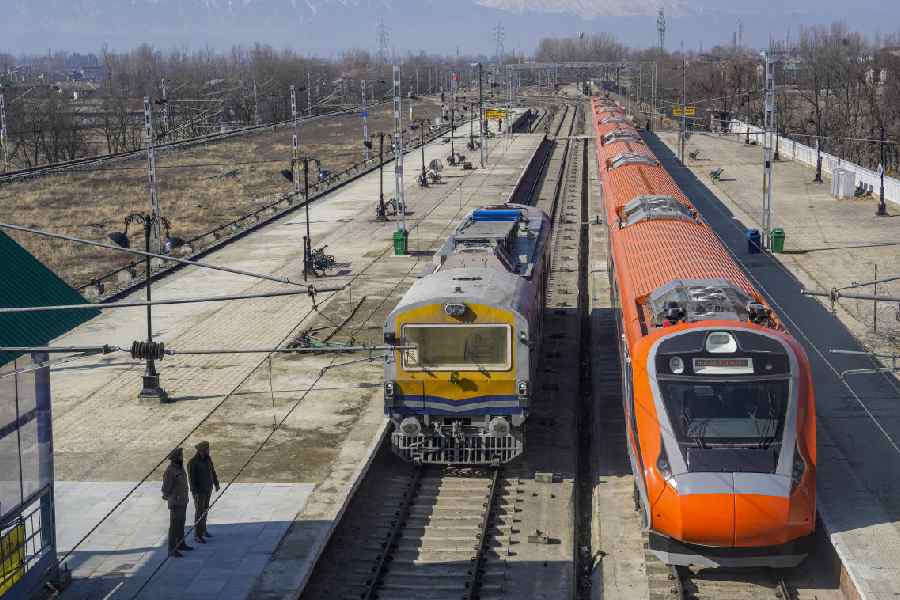 |
Yet another SUV has hit the market...no surprises there! But hold on, this isn’t just another SUV. How can it be when it comes bearing the Audi badge! Yes, the Audi Q7 had to come our way. After all, Mercedes is here with its M Class SUV, and one does see the odd BMW X5 zooming around the streets of affluent India. Both the Volkswagen Touareg and the Porsche Cayenne are also quite easily available here.
What’s more, true auto fans must be delighted as Audi lays great store by its development and use of technology in its cars. The company truly believes in advancement through technology, or as they say in German, ‘vorsprung durch technik’.
Coming to the Q7, if you look at it from the front, it seems to be a normal-sized SUV. But look at it in profile or from a three-quarter angle, and suddenly, the Q7 seems to be very large. That’s partly due to the styling that accentuates the size, but mainly because of the dimensions — 5,086mm long, 1,983mm wide and 1,737mm tall. Compare these figures to that of the Cayenne (4782mm x 1928mm x 1699mm), the M Class (4780mm x 1911mm x 1779 mm) and the X5 (4667mm x 1872mm x 1750mm), and the Q7 emerges the big daddy — longer and wider than its rivals.
Look at the car starting from the front end, following the curved line of the roof to the sloping D-pillars and it seems the Q7 has three different characters. The front has the now familiar Audi family grille while the side has a high belt line. The rear, about the D-pillars ends in a coupe shape. One usually does not talk about aerodynamic drag coefficients in SUVs, but the drag coefficient of the Audi Q7 on models with steel suspension is 0.37. With air suspension, it is even lower due to the lowered body at higher speeds.
The wheelbase is quite large at 3.00 metres, which also makes for ample seating space — for up to seven passengers. Luggage capacity starts at 775litres in the five-seater but goes up to 2035 litres depending upon the configuration of the car, with both the rear seats folded flat, making the Q7 quite the cargo carrier.
For India, the Q7 is being offered with two engine options — a 4.2 litre petrol V8 with FSI technology, the same fuel-efficient petrol technology that won Audi its Le Mans 24Hrs victories before this year’s diesel-powered victory. The V8 develops 350bhp of power and 440Nm of torque and this gives it a top speed of 248kph and a 0-100kph time of 7.4seconds.
 |
However it is the other unit, the diesel, which is of great interest. A 3.0litre V6 Tdi unit, this develops 233bhp, which is a decent enough figure, but it is the torque figure that is astounding — 500Nm of torque from as low down as 1750rpm, which is just a little above idling speed. This has a top speed of 216kph and a 0-100kph time of 9.1 seconds.
The V6 is a common-rail unit using piezo inline injectors. Power is transmitted to the wheels via a six-speed tiptronic transmission unit while the four-wheel drive is the latest version of Audi’s famous ‘quattro’ system in which the centre differential relays power to all four wheels with a 40-60 torque split (front-rear). The power and torque is put down on the road via 235/60 tyres on 18-inch alloy wheel rims in the V6 and 255/55 lower aspect ratio tyres in the V8.
Audi has also just announced a 6-litre V12 diesel engine for the Q7. It develops 500 BHP of power and a huge 1000Nm of torque and gives the Q7 a 0-100kph time of just 5.5 seconds. However, it will be a while before that engine is seen in India.
The Q7 comes with a choice in suspensions — the standard suspension is Audi’s double wishbone system and a high-tech adaptive air suspension with adjustable ride height and dynamic roll stabilisation. Moreover, the ground clearance can be varied from 180mm to 240mm.
All four wheels are suspended independently and most of the axle components are made of aluminium. The steel-spring suspension and twin-tube shock absorbers are designed for sporty driving and superior comfort, even off-road. The Audi engineers have tilted position of the rear spring and shock absorber unit so as to reduce overall height and create more room at the rear.
Inside, the Q7 comes packing a plethora of accessories and standard equipment. There’s the MultiMedia Interface or MMI, automatic air-conditioning, xenon plus headlights and also — what should be a huge hit with sun-worshippers — a panorama glass sunroof option. Drivers will appreciate the optional warning system for lane-changing manoeuvres called Audi side assist as also the radar-based distance control system adaptive cruise control.
The Q7 has been priced at between Rs 58 lakh and Rs 77.5 lakh plus depending upon engine choice and accessories. Though the price definitely puts it in the upper luxury bracket, Audi still has to establish itself in the eyes of the general Indian public, which has a tendency of favouring Mercedes and BMW.
My favourite long-drive
 |
Maneka Sorcar, magician
I rarely ever drive in Calcutta. I find it a trial to keep my temper in check when I’m behind the wheel negotiating Calcutta traffic. However, I do love going for long drives with friends and family when I’m in the right frame of mind —– relaxed and carefree.
But these days I rarely ever find the time to do that. It seems I’ve evolved into a responsible citizen. Filling a car up with friends, driving to nowhere and getting stopped by a cop is definitely a thing of the past.
If I had to choose though, I’d say my favourite long drive was on an interstate highway connecting San Fransisco to Canada. It’s a beautiful drive and you get a great view of the Pacific. But it’s also one of the most difficult highways to drive on. I remember a road trip I took with friends. It was exhilarating at first, but later, I found myself surrendering the wheel. Then by unanimous decision, we got off the highway and made a detour to Portland










